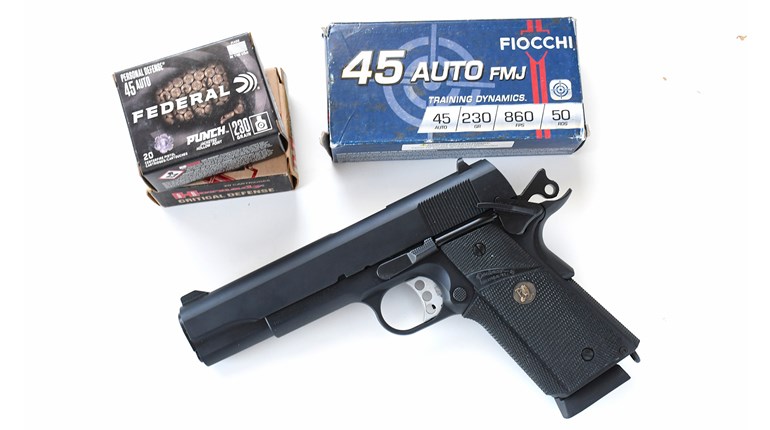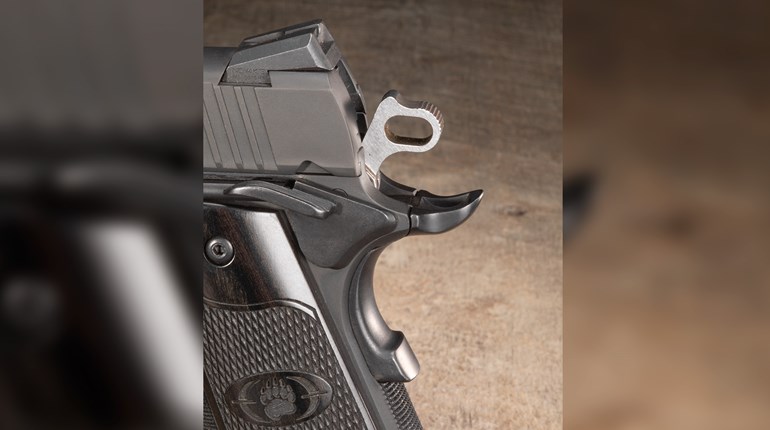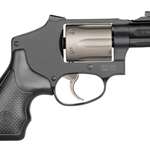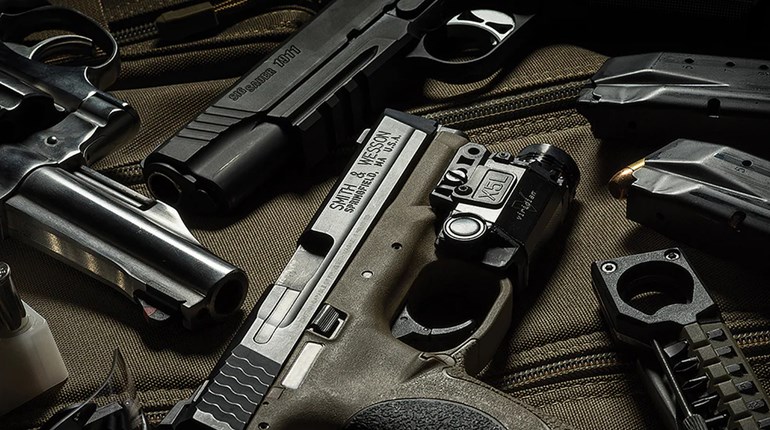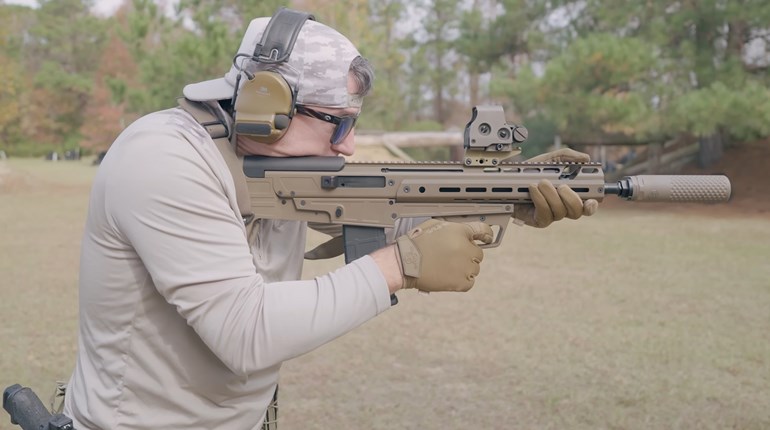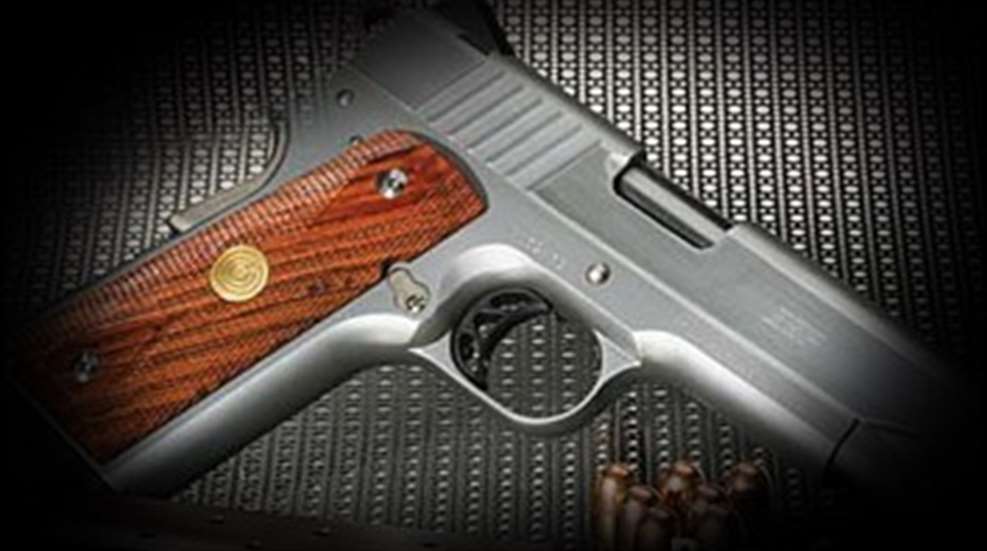
The majority of 1911 devotees have the "If it isn't broken, then don't fix it" mentality. For them, the field-proven, single-action 1911 is unquestionably the best self-defense handgun, and anything more than a few minor upgrades is simply unacceptable. This group will take stock in the Para-Ordnance 1911 SSP Gun Rights.
The full-size, single-action 1911 SSP Gun Rights .45 ACP, which is part of Para-Ordnance's PXT lineup, has an all-weather, brushed-satin finish on the stainless steel frame and top, and beveled serrations on the stainless steel slide to reduce glare. The slide's sides are polished to a mirror-like brightness for eye-catching appeal. Its beavertail grip safety, slide lock safety, slide stop, hammer, magazine-release button and barrel bushing are finished somewhere between the two, which is a result of nickel plating on these carbon steel parts. The stocks are constructed from highly figured cocobolo and have a double-diamond checkering pattern with an inset Para-Ordnance medallion centered on each. Whereas the frontstrap is smooth, the black insert in the lower half of the backstrap has fine checkering to aid purchase. Even with the gun's hefty 39-ounce weight, the checkering was a fine addition to aid control during recoil with hard-hitting, 230-grain loads.
Atop the slide are a black, low-profile, square-notch, combat-style rear sight with two dots and a fiber-optic front sight. Both are dovetailed into place, with the rear sight having a setscrew to secure it. The rear sight also has horizontal serrations on its rear face to minimize glare in bright sunlight. Two replacement fiber-optic strands in green and red are included with the pistol.
To reduce lock time, the spurred hammer on the PXT 1911 SSP Gun Rights is skeletonized. In fact, there is very little hammer there. Also lightened is the match-grade trigger with a carbon-fiber-polymer shoe, which is not only durable, but significantly lighter than metal. The trigger on the test gun broke cleanly at 3 1⁄4 pounds. There was no discernible creep or overtravel. The trigger also has vertical serrations on its face.
Gun Rights has a highly polished integral ramp—yet another way to ensure reliability. To protect the rifling, the barrel has a slightly recessed and beveled muzzle crown. Beneath the barrel is a full-length, one-piece guide rod. Providing extraction is Para's oversized PXT Power Extractor that, combined with a lowered and flared ejection port, ensures spent cases clear the pistol. Feeding the 1911 SSP is Para's PXT eight-round magazine that is built in-house from heat-treated 17-7 stainless steel with a Teflon-infused polymer follower. The magazine's base plate is constructed from high-impact nylon polymer. A beveled magazine well on the 1911 SSP helps facilitate quick magazine changes.
Para PXT series pistols are fitted with a number of safety devices, both active and passive. Active safeties include the standard 1911 slide lock safety and the newer grip safety, while the passive safeties include a disconnector, inertia firing pin, hammer safety stop and firing pin lock.
After applying lubrication to key areas according to Para-Ordnance's instructions, I headed to the range with an assortment of target, competition and self-defense ammunition in varying weights and bullet types. Shooting from a sandbag rest at 25 yards, the best groups came from Federal Gold Medal 230-grain full-metal-jacket match ammo, which turned in an average of 1.83 inches for five, five-shot groups. This load was not the only one producing good results, as no other ammunition tested, whether target or self-defense, averaged more than 3 1⁄2 inches at that distance. In fact, most grouped around 2 1⁄2 inches or less.
Because Para-Ordnance pistols are hand-assembled to exacting tolerances, there is a requisite break-in period before placing it into service. The company's advice is to alternate through the two provided magazines until 250 rounds have been shot. Then the gun should be field stripped, cleaned and re-lubricated. The cycle should be repeated until 500 rounds have been fired.
While at the range some ammunition types failed to feed regularly, while others only had an occasional hiccup every now and then. After following Para's recommendations for proper break-in, the pistol now feeds flawlessly. With more than 600 rounds through the PXT 1911 SSP Gun Rights, I feel it is as reliable, if not more so, than most pistols on the market. Perhaps most interesting was that through all of the testing, not once did a cartridge fail to extract—a testament to the PXT Power Extractor.
With most firearms I can find something that is missing or for some reason, just isn't right. That's not the case with the Para Ordnance PXT 1911 SSP Gun Rights. From the cocobolo wood grips and light trigger pull weight to the fiber-optic front sight and satin finish, there was nothing I didn't like. And with as many rounds as I sent through the pistol, I trust its reliability to end any situation gone awry.
The 1911 shooter who prefers to carry his or her 1911 cocked and locked, yet wants the best and most modern features, will find the Para-Ordnance PXT 1911 SSP Gun Rights fits the bill. And when you make a purchase, $25 will be donated to National Rifle Association-Institute for Legislative Action. What can be better than buying an accurate and reliable single-action 1911 while protecting your gun rights?













